In the book of 3D graphics for game programming by JungHyun Han, at page 38-39, it is given that
the basis transformation matrix from e_1, e_2, e_3 to u,v,n is

However, this contradicts with what I know from linear algebra. I mean shouldn't the basis-transformation matrix be the transpose of that matrix ?
Note that the author does his derivation, but I couldn't find where is the missing point between what I know and what the author does.
The code: Vertex Shader:
#version 330
layout(location = 0) in vec4 position;
layout(location = 1) in vec4 color;
uniform vec3 cameraPosition;
uniform vec3 AT;
uniform vec3 UP;
uniform mat4 worldTrans;
vec3 ep_1 = ( cameraPosition - AT )/ length(cameraPosition - AT);
vec3 ep_2 = ( cross(UP, ep_1) )/length( cross(UP, ep_1 ));
vec3 ep_3 = cross(ep_1, ep_2);
vec4 t_ep_1 = vec4(ep_1, -1.0f);
vec4 t_ep_2 = vec4(ep_2, cameraPosition.y);
vec4 t_ep_3 = vec4(ep_3, cameraPosition.z);
mat4 viewTransform = mat4(t_ep_1, t_ep_2, t_ep_3, vec4(0.0f, 0.0f, 0.0f, 1.0f));
smooth out vec4 fragColor;
void main()
{
gl_Position = transpose(viewTransform) * position;
fragColor = color;
}
)glsl";
Inputs:
GLuint transMat = glGetUniformLocation(m_Program.m_shaderProgram, "worldTrans");
GLfloat dArray[16] = {0.0};
dArray[0] = 1;
dArray[3] = 0.5;
dArray[5] = 1;
dArray[7] = 0.5;
dArray[10] = 1;
dArray[11] = 0;
dArray[15] = 1;
glUniformMatrix4fv(transMat, 1, GL_TRUE, &dArray[0]);
GLuint cameraPosId = glGetUniformLocation(m_Program.m_shaderProgram, "cameraPosition");
GLuint ATId = glGetUniformLocation(m_Program.m_shaderProgram, "AT");
GLuint UPId = glGetUniformLocation(m_Program.m_shaderProgram, "UP");
const float cameraPosition[4] = {2.0f, 0.0f, 0.0f};
const float AT[4] = {1.0f, 0.0f, 0.0f};
const float UP[4] = {0.0f, 0.0f, 1.0f};
glUniform3fv(cameraPosId, 1, cameraPosition);
glUniform3fv(ATId, 1, AT);
glUniform3fv(UPId, 1, UP);




